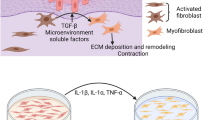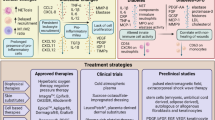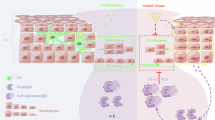Abstract
Langerhans cells (LCs) are a specialized subset of epidermal dendritic cells. They represent one of the first cells of immunologic barrier and play an important role during the inflammatory phase of acute wound healing. Despite considerable progress in our understanding of the immunopathology of diabetes mellitus and its associated comorbidities such as diabetic foot ulcers (DFUs), considerable gaps in our knowledge exist. In this study, we utilized the human ex vivo wound model and confirmed the increased epidermal LCs at wound edges during early phases of wound healing. Next, we aimed to determine differences in quantity of LCs between normal human and diabetic foot skin and to learn if the presence of LCs correlates with the healing outcome in DFUs. We utilized immunofluorescence to detect CD207+ LCs in specimens from normal and diabetic foot skin and DFU wound edges. Specimens from DFUs were collected at the initial visit and 4 weeks later at the time when the healing outcome was determined. DFUs that decreased in size by >50 % were considered to be healing, while DFUs with a size reduction of <50 % were considered non-healing. Quantitative assessment of LCs showed a higher number of LCs in healing when compared to non-healing DFU’s. Our findings provide evidence that LCs are present in higher number in diabetic feet than normal foot skin. Healing DFUs show a higher number of LCs compared to non-healing DFUs. These findings indicate that the epidermal immune barrier plays an important role in the DFU healing outcome and may offer new therapeutic avenues targeting LC in non-healing DFUs.



Similar content being viewed by others
References
Gallo PM, Gallucci S. The dendritic cell response to classic, emerging, and homeostatic danger signals. Implications for autoimmunity. Front Immunol. 2013;4:138. doi:10.3389/fimmu.2013.00138.
Hoeffel G, Wang Y, Greter M, See P, Teo P, Malleret B, et al. Adult Langerhans cells derive predominantly from embryonic fetal liver monocytes with a minor contribution of yolk sac-derived macrophages. J Exp Med. 2012;209(6):1167–81. doi:10.1084/jem.20120340.
Merad M, Manz MG, Karsunky H, Wagers A, Peters W, Charo I, et al. Langerhans cells renew in the skin throughout life under steady-state conditions. Nat Immunol. 2002;3(12):1135–41. doi:10.1038/ni852.
Valladeau J, Ravel O, Dezutter-Dambuyant C, Moore K, Kleijmeer M, Liu Y, et al. Langerin, a novel C-type lectin specific to Langerhans cells, is an endocytic receptor that induces the formation of Birbeck granules. Immunity. 2000;12(1):71–81.
Banchereau J, Steinman RM. Dendritic cells and the control of immunity. Nature. 1998;392(6673):245–52. doi:10.1038/32588.
Strbo N, Yin N, Stojadinovic O. Innate and adaptive immune responses in wound epithelialization. Advances in Wound Care. 2013.
Igyarto BZ, Kaplan DH. The evolving function of Langerhans cells in adaptive skin immunity. Immunol Cell Biol. 2010;88(4):361–5. doi:10.1038/icb.2010.24.
Geissmann F, Prost C, Monnet JP, Dy M, Brousse N, Hermine O. Transforming growth factor beta1, in the presence of granulocyte/macrophage colony-stimulating factor and interleukin 4, induces differentiation of human peripheral blood monocytes into dendritic Langerhans cells. J Exp Med. 1998;187(6):961–6.
Hacker C, Kirsch RD, Ju XS, Hieronymus T, Gust TC, Kuhl C, et al. Transcriptional profiling identifies Id2 function in dendritic cell development. Nat Immunol. 2003;4(4):380–6. doi:10.1038/ni903.
Fainaru O, Woolf E, Lotem J, Yarmus M, Brenner O, Goldenberg D, et al. Runx3 regulates mouse TGF-beta-mediated dendritic cell function and its absence results in airway inflammation. EMBO J. 2004;23(4):969–79. doi:10.1038/sj.emboj.7600085.
Singer AJ, Clark RA. Cutaneous wound healing. N Engl J Med. 1999;341(10):738–46. doi:10.1056/NEJM199909023411006.
Jameson JM, Sharp LL, Witherden DA, Havran WL. Regulation of skin cell homeostasis by gamma delta T cells. Front Biosci. 2004;9:2640–51.
Noli C, Miolo A. The mast cell in wound healing. Vet Dermatol. 2001;12(6):303–13.
Juhasz I, Simon M Jr, Herlyn M, Hunyadi J. Repopulation of Langerhans cells during wound healing in an experimental human skin/SCID mouse model. Immunol Lett. 1996;52(2–3):125–8.
Helfman T, Streilein JW, Eaglstein WH, Mertz PM. Studies on the repopulation of Langerhans cells in partial-thickness wounds. Air exposed and occlusively dressed. Arch Dermatol. 1993;129(5):592–5.
Reiber GE. The epidemiology of diabetic foot problems. Diabet Med. 1996;13(Suppl 1):S6–11.
Reiber GE, Ledous WE. Epidemiology of diabetic foot ulcers and amputations: evidence for prevention. In: Williams R, Herman W, Kinmonth A-L, editors. The evidence base for diabetes care. London: Wiley; 2002. p. 641–65.
Pecoraro RE, Reiber GE, Burgess EM. Pathways to diabetic limb amputation. Basis for prevention. Diabetes Care. 1990;13(5):513–21.
Boyko EJ, Ahroni JH, Smith DG, Davignon D. Increased mortality associated with diabetic foot ulcer. Diabet Med. 1996;13(11):967–72. doi:10.1002/(SICI)1096-9136(199611)13:11<967:AID-DIA266>3.0.CO;2-K.
Tellechea A, Kafanas A, Leal EC, Tecilazich F, Kuchibhotla S, Auster ME, et al. Increased skin inflammation and blood vessel density in human and experimental diabetes. Int J Low Extrem Wounds. 2013;12(1):4–11. doi:10.1177/1534734612474303.
Casanova-Molla J, Morales M, Planas-Rigol E, Bosch A, Calvo M, Grau-Junyent JM, et al. Epidermal Langerhans cells in small fiber neuropathies. Pain. 2012;153(5):982–9. doi:10.1016/j.pain.2012.01.021.
Rosner K, Ross C, Karlsmark T, Petersen AA, Gottrup F, Vejlsgaard GL. Immunohistochemical characterization of the cutaneous cellular infiltrate in different areas of chronic leg ulcers. APMIS: Acta Pathologica, Microbiologica, Et Immunologica Scandinavica. 1995;103(4):293–9.
Loots MA, Lamme EN, Zeegelaar J, Mekkes JR, Bos JD, Middelkoop E. Differences in cellular infiltrate and extracellular matrix of chronic diabetic and venous ulcers versus acute wounds. J Invest Dermatol. 1998;111(5):850–7. doi:10.1046/j.1523-1747.1998.00381.x.
Galkowska H, Wojewodzka U, Olszewski WL. Low recruitment of immune cells with increased expression of endothelial adhesion molecules in margins of the chronic diabetic foot ulcers. Wound Repair Regen. 2005;13(3):248–54. doi:10.1111/j.1067-1927.2005.130306.x.
Stojadinovic O, Landon JN, Gordon KA, Pastar I, Escandon J, Vivas A, et al. Quality assessment of tissue specimens for studies of diabetic foot ulcers. Exp Dermatol. 2013;22(3):216–8. doi:10.1111/exd.12104.
Berger CL, Vasquez JG, Shofner J, Mariwalla K, Edelson RL. Langerhans cells: mediators of immunity and tolerance. Int J Biochem Cell Biol. 2006;38(10):1632–6. doi:10.1016/j.biocel.2006.03.006.
Sheehan P, Jones P, Caselli A, Giurini JM, Veves A. Percent change in wound area of diabetic foot ulcers over a 4-week period is a robust predictor of complete healing in a 12-week prospective trial. Diabetes Care. 2003;26(6):1879–82.
Stojadinovic O, Brem H, Vouthounis C, Lee B, Fallon J, Stallcup M, et al. Molecular pathogenesis of chronic wounds: the role of beta-catenin and c-myc in the inhibition of epithelialization and wound healing. Am J Pathol. 2005;167(1):59–69.
Lee B, Vouthounis C, Stojadinovic O, Brem H, Im M, Tomic-Canic M. From an enhance some to a repress some: molecular antagonism between glucocorticoids and EGF leads to inhibition of wound healing. J Mol Biol. 2005;345(5):1083–97. doi:10.1016/j.jmb.2004.11.027.
Stojadinovic O, Lee B, Vouthounis C, Vukelic S, Pastar I, Blumenberg M, et al. Novel genomic effects of glucocorticoids in epidermal keratinocytes: inhibition of apoptosis, interferon-gamma pathway, and wound healing along with promotion of terminal differentiation. J Biol Chem. 2007;282(6):4021–34. doi:10.1074/jbc.M606262200.
Tomic-Canic M, Mamber SW, Stojadinovic O, Lee B, Radoja N, McMichael J. Streptolysin O enhances keratinocyte migration and proliferation and promotes skin organ culture wound healing in vitro. Wound Repair Regen. 2007;15(1):71–9. doi:10.1111/j.1524-475X.2006.00187.x.
Stojadinovic O, Tomic-Canic M. Human ex vivo wound healing model. Methods Mol Biol. 2013;1037:255–64. doi:10.1007/978-1-62703-505-7_14.
Wang CQ, Cruz-Inigo AE, Fuentes-Duculan J, Moussai D, Gulati N, Sullivan-Whalen M, et al. Th17 cells and activated dendritic cells are increased in vitiligo lesions. PLoS ONE. 2011;6(4):e18907. doi:10.1371/journal.pone.0018907.
Asahina A, Tamaki K. Role of Langerhans cells in cutaneous protective immunity: is the reappraisal necessary? J Dermatol Sci. 2006;44(1):1–9. doi:10.1016/j.jdermsci.2006.07.002.
Galkowska H, Olszewski WL, Wojewodzka U. Expression of natural antimicrobial peptide beta-defensin-2 and Langerhans cell accumulation in epidermis from human non-healing leg ulcers. Folia Histochem Cytobiol. 2005;43(3):133–6.
Merad M, Ginhoux F, Collin M. Origin, homeostasis and function of Langerhans cells and other langerin-expressing dendritic cells. Nat Rev Immunol. 2008;8(12):935–47. doi:10.1038/nri2455.
Potten CS, Allen TD. A model implicating the Langerhans cell in keratinocyte proliferation control. Differentiation. 1976;5(1):43–7.
Hostetter MK. Handicaps to host defense. Effects of hyperglycemia on C3 and Candida albicans. Diabetes. 1990;39(3):271–5.
McMahon MM, Bistrian BR. Host defenses and susceptibility to infection in patients with diabetes mellitus. Infect Dis Clin North Am. 1995;9(1):1–9.
Koh GC, Peacock SJ, van der Poll T, Wiersinga WJ. The impact of diabetes on the pathogenesis of sepsis. Eur J Clin Microbiol Infect Dis. 2012;31(4):379–88. doi:10.1007/s10096-011-1337-4.
Pastar I, Stojadinovic O, Tomic-Canic M. Role of keratinocytes in healing of chronic wounds. Surg Technol Int. 2008;17:105–12.
Barrientos S, Stojadinovic O, Golinko MS, Brem H, Tomic-Canic M. Growth factors and cytokines in wound healing. Wound Repair Regen. 2008;16(5):585–601. doi:10.1111/j.1524-475X.2008.00410.x.
Nakamura K, Williams IR, Kupper TS. Keratinocyte-derived monocyte chemoattractant protein 1 (MCP-1): analysis in a transgenic model demonstrates MCP-1 can recruit dendritic and Langerhans cells to skin. J Invest Dermatol. 1995;105(5):635–43.
Low QE, Drugea IA, Duffner LA, Quinn DG, Cook DN, Rollins BJ, et al. Wound healing in MIP-1alpha(−/−) and MCP-1(−/−) mice. Am J Pathol. 2001;159(2):457–63.
Kaplan DH, Jenison MC, Saeland S, Shlomchik WD, Shlomchik MJ. Epidermal Langerhans cell-deficient mice develop enhanced contact hypersensitivity. Immunity. 2005;23(6):611–20. doi:10.1016/j.immuni.2005.10.008.
Romani N, Koide S, Crowley M, Witmer-Pack M, Livingstone AM, Fathman CG, et al. Presentation of exogenous protein antigens by dendritic cells to T cell clones. Intact protein is presented best by immature, epidermal Langerhans cells. J Exp Med. 1989;169(3):1169–78.
Stoitzner P, Tripp CH, Eberhart A, Price KM, Jung JY, Bursch L, et al. Langerhans cells cross-present antigen derived from skin. Proc Natl Acad Sci USA. 2006;103(20):7783–8. doi:10.1073/pnas.0509307103.
Lutz MB, Dohler A, Azukizawa H. Revisiting the tolerogenicity of epidermal Langerhans cells. Immunol Cell Biol. 2010;88(4):381–6. doi:10.1038/icb.2010.17.
Acknowledgments
We thank Dr Anthony LaBruna and Dr Thomas Zwick for providing skin specimens, and Shailee Patel and members of the Wound Healing Clinical Research Team for technical assistance. This work is supported by National Institutes of Health (DK086364; NR013881) to MT-C.
Author information
Authors and Affiliations
Corresponding author
Rights and permissions
About this article
Cite this article
Stojadinovic, O., Yin, N., Lehmann, J. et al. Increased number of Langerhans cells in the epidermis of diabetic foot ulcers correlates with healing outcome. Immunol Res 57, 222–228 (2013). https://doi.org/10.1007/s12026-013-8474-z
Published:
Issue Date:
DOI: https://doi.org/10.1007/s12026-013-8474-z




